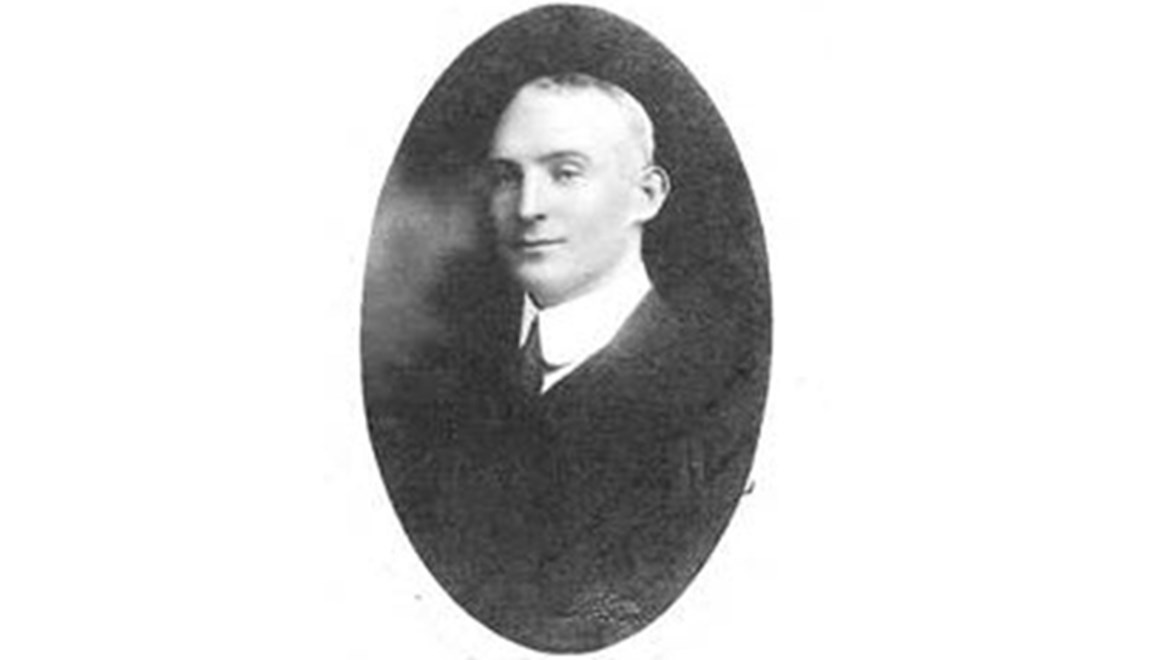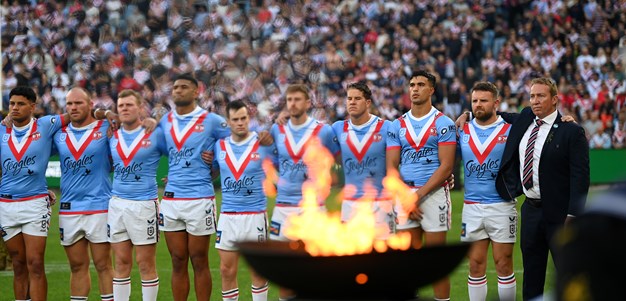

Headgear to Helmets is a documentary feature film that provides an insight into rugby league players who enlisted in the Australian and New Zealand Army Corps and saw active duty during the ill-fated Gallipoli Campaign.
Headgear to Helmets: George Duffin
Headgear to Helmets: Stan Carpenter
Headgear to Helmets: Herbert Bolt
Headgear to Helmets: Tom Bruce
Headgear to Helmets: Paddy Bugden
Headgear to Helmets: Charles Savory
The following story is the last in a series of seven.
Sergeant Ted Larkin wasn't in the first wave of Anzacs who landed at Gallipoli on the morning of April 25, 1915. But he was ashore soon enough on that dreadful, historic day. Within hours he was dead, mowed down by the Turkish machine guns as he led his platoon towards an area that would become known as 'Lone Pine'.
So ended the short but remarkable life of arguably the greatest administrator Australian rugby league has ever known.
Larkin came to league via a circuitous route. The son of a Newcastle miner and a Newtown hooker who appeared in one rugby union Test, his playing career ended in 1904, at age 24, when he joined the police force. Larkin was on the sidelines three years later when some of his former team-mates helped form the breakaway NSW Rugby League. He came on board in June 1909 as the League's first full-time secretary.
The original secretary, Jim Giltinan, remembered today by the time-honoured JJ Giltinan Shield, had been driven from office amid allegations of corruption and secret bank accounts. Observers wondered if the NSWRL, which appeared to be broke, could survive the year.
But Larkin hadn't handed in his police badge for nothing.
He and his new cohorts found league a benefactor in the entrepreneurial James Joynton Smith, who funded the signing of many of the Wallabies' best players. Troublemakers were ruthlessly shown the door. Great Britain toured Australia in 1910, drawing big crowds. Quickly, Truth newspaper was describing Larkin as 'the key to the clockwork of the machinery which has evolved league football to popularity'.
So many things that remain a part of today's game began on Larkin's watch. He drove the rise of country football, established the game in the Catholic schools and pioneered pre-game entertainment. He knew the worth of international football.
'Everyone who has the slightest knowledge of the game puts the success of the movement down to Teddy's wonderful guiding hand,' wrote the Sydney Sportsman.
As a former top-level footballer, he was able to build a bond with the game's elite players. In return, they backed his vision. When Easts played Glebe in an exhibition at Orange in April 1912, an event that heralded the birth of league in western NSW, the premiership's two biggest names — Dally Messenger and Chris McKivat — led their respective teams.
Larkin also knew he needed to build relationships with the city's best sports venues, but some remained under the Union's control. A seminal moment came in 1913, when he negotiated the deal that got league onto the Sydney Cricket Ground on a regular basis. The first premiership game at the SCG, Easts v Newtown, was played on May 3.
Later that year, Larkin sprung a surprise by standing for state parliament, as the Labor candidate for the northern Sydney seat of Willoughby. Labor had never topped a poll for a seat north of the harbour, but the League secretary ran a masterful campaign and surged to victory. At age 33, Larkin was being spoken of as a future premier or prime minister.
He tried to resign his football post but was cajoled into staying involved until the end of 1914. However, when it was announced Australia was at war, he enlisted immediately, severing his direct sporting links — not just his NSWRL position but also his role as president of the Federal Cycling Council of Australasia — at the same time. He did remain on the board of the Royal North Shore hospital (a position that would be passed on to his widow). He was the father of two sons, aged six and two.
'I cannot engage in the work of recruiting and urge others to enlist unless I do so myself,' he explained.
As the member for Willoughby, Larkin could have sought rank. Instead, he entered the army as a private. Within 48 hours, he was promoted to sergeant. At Gallipoli, as he and his men raced into a hornet's nest, he displayed — to quote the official record — 'conspicuous gallantry'.
Private Harold Cavill, a bugler in the 2nd battalion, provided this account of Larkin's demise: "Wounded and dying he lay, yet when the stretcher-bearers came to carry him in, he waved them on, saying, 'There's plenty worse than me out there'."
"Later, they found him - dead."
Sergeant Harry Sparks of the 1st battalion wrote a letter to Charlie Ford, a prominent Norths and NSWRL official.
"I was with Ted in a hot corner... he gave the order to advance, which was done rapidly with bayonets fixed," Sparks recalled.
"We got amongst the enemy's trenches which had been evacuated owing to our hurried visit. We stayed there until shelled out.
"Ted fell with his lads right in front of the argument. His brother Martin and my brother Mervyn went at the same time."
Larkin's remains were not recovered until a brief armistice on May 24. So severe were his wounds, erroneous rumours spread from Gallipoli to the streets of Sydney that the Turks had mutilated his body; so toxic were these rumours, the Army felt it necessary to issue a formal denial from Captain Charles Bean, their press officer on the frontline.
A memorial service was held at Sydney's St Mary's Cathedral. A plaque was unveiled in the Legislative Assembly chamber at NSW Parliament House, to honour Larkin and Lieutenant-Colonel George Braund, the other member of the Assembly who died at Gallipoli.
Testimonial events were staged by the rugby league and cycling communities. But as sport and politics paled into insignificance behind the war effort, the former League secretary was largely forgotten.
In a sense, the game he ran from 1909 to 1914 is his memorial. More than any other individual, Sergeant Ted Larkin built the bedrock on which Australian rugby league is based. Yet, his efforts as a sports administrator — and as Test footballer, policeman, community worker and politician — pale into insignificance next to his sacrifice on the very first Anzac Day.
Lest we forget.


